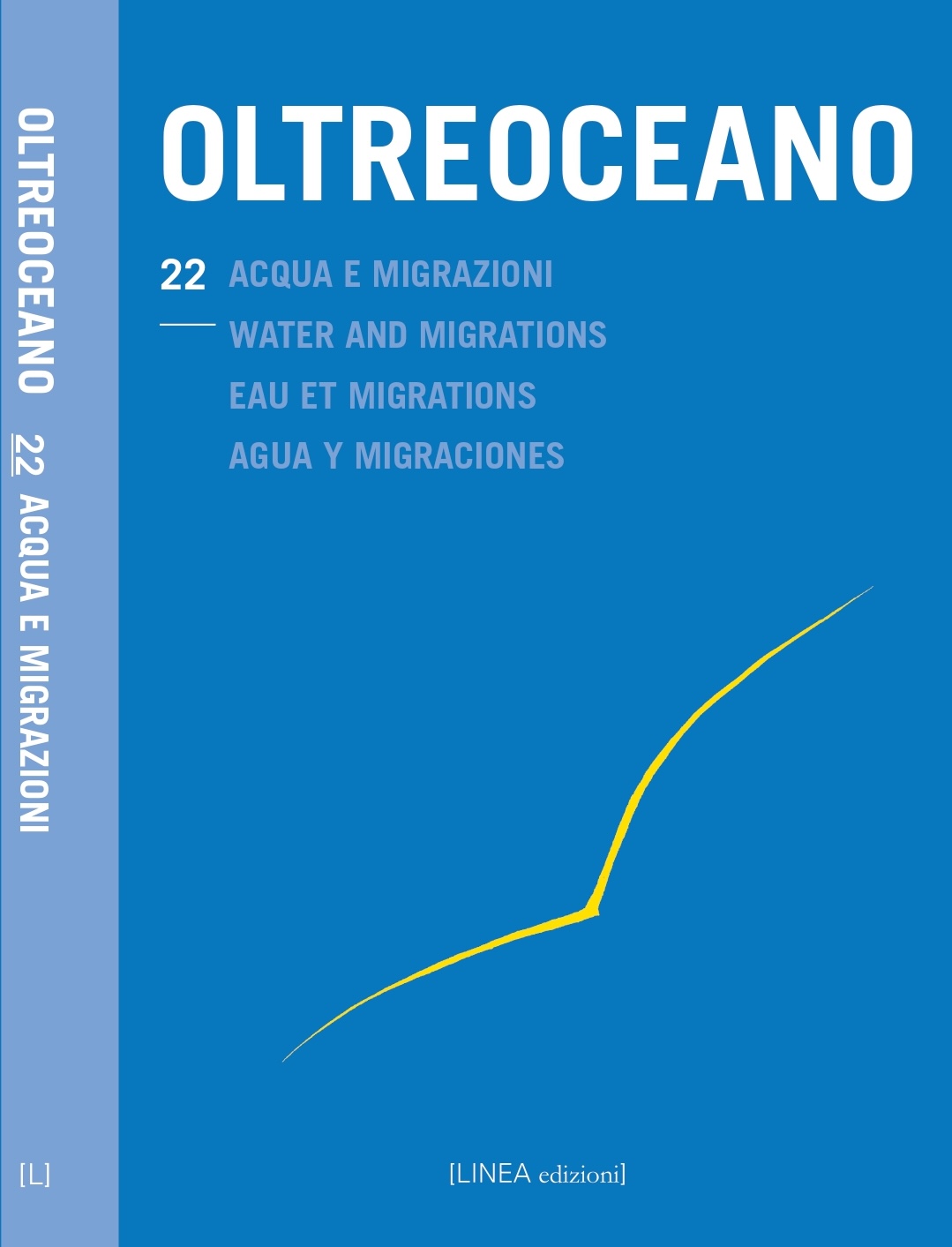The haunted waters of Congo in Alain Mabanckou’s Lumières de Pointe-Noire (2013) and Petit Piment (2015)
DOI:
https://doi.org/10.53154/Oltreoceano86Keywords:
Mabanckou, Ocean, Autobiography, Congo, MemoriesAbstract
Lumière de Pointe-Noire (2013), an autobiographical story, and the picaresque novel Petit Piment (2015), whose protagonist is an orphaned child who wanders the labyrinthine streets of Pointe-Noire. Both texts evoke the legend of Mami Watta, who is both a maternal and sensual mermaid, and a deadly spirit. This ancient mythical creature haunts the seas along with other magical spirits and is part of Congolese beliefs. In Lumière de Pointe-Noire, the aquatic space, evoked through Mabanckou’s memories, remains forbidden to children’s games because of its magic effect on men. The author plunges us into a sinister affair, in which the sea is the murderous protagonist, by using photographs, which enrich the reading, and cinematographic art, whose references are scattered throughout the story. The writer describes the prohibitions and the popular legends imposed on him as a child and the fear of the ocean, while taking a critical look at these popular legends as an adult. Similarly, the myth of the mermaid and the dangers of the sea are recounted in his picaresque novel, Petit Piment: here the creature is a murderous figure who captures the orphans and drags them into the abyss of the waters. The author uses fiction to ironically denounce the educational system and popular beliefs. In this way, Mabanckou elaborates on his childhood memories associated with the ocean and filters these beliefs through the naive eyes of the little orphan, which enables the superposition of the author-child with his protagonist. Finally, the character of Doukou Daka, Petit Piment’s teacher, emerges from the narrative as a positive figure, who embodies the voice of reason, comparable to the adult author of Lumière de Pointe-Noire.
Downloads
References
Blékain, A. (2016): De l’intergénéricité et de l’interartialité dans Lumières de Pointe-Noire d’Alain Mabanckou ou le roman N’zassa en question. Nouvelle revue d’esthétique, 17, 1, pp. 77-87.
Chevalier, J. & Gheebrat, A. (1982): Dictionnaire des symboles. Paris: Robert Laffont.
Mabanckou A. (2009, juillet): Mes amours d’antan. Courrier international. Tiré de https://www.courrierinternational.com/article/2009/08/01/mes-amours-d-antan (Consulté le 10/03/2023).
Froger, M. & Müller, J. E. (2007): L’interartialité: Pour une archéologie de l’intermédialité. In J. Froger & J. Müller (Eds.), Intermédialité et socialité. Histoire et géographie d’un concept (pp. 69-92). Münster: Nodus.
Gonzalez, J. (2020): Vérité, vraisemblance ou fictionnalisation du récit d’enfance chez Alain Mabanckou. In J.-M. Devésa (Eds.), Littérature du moi, autofiction et hétérographie dans la littérature française et en français du XXe et du XXIe siècles (pp. 115-119). Bordeaux: Presses Universitaires de Bordeaux.
Jewsiewicki, B. & Baloji, S. (2012): Mami wata et mamba muntu: Sirène médiatrice dans l’imaginaire collectif congolais. In A. Caiozzo & N. Ernoult (Eds.), Femmes médiatrices et ambivalentes (pp. 107-116). Paris: Armand Colin.
Mabanckou, A. (2013): Lumières de Pointe-Noire. Paris: Seuil.
Mabanckou, A. (2015): Petit Piment: Roman. Paris: Seuil.
Müller, J. (2000): L’intermédialité, une nouvelle approche interdisciplinaire: Perspectives théoriques et pratiques à l’exemple de la vision de la télévision. Cinémas : revue d’études cinématographiques / Cinémas: Journal of Film Studies, 10, 2-3, pp. 105-134.
Plancke, C. (2011): The Spirit’s Wish: Possession Trance and Female Power among the Punu of Congo-Brazzaville. The Journal of Religion in Africa, 41, 4, pp. 366-395. Tiré de https://doi.org/10.1163/157006611X599181 (Consulté le 23/02/2023).
Tiberini, E. S. (1992): Mami Wata: Pratiche cultuali e trascrizioni formali. L’Uomo società tradizione sviluppo, 5, 1/2, Art. ½, pp. 281-291.
Toivanen A. (2017): Uneasy “homecoming” in Alain Mabanckou’s Lumières de Pointe-Noire. Studies in Travel Writing, 21, pp. 327-345.
Downloads
Published
How to Cite
Issue
Section
License

This work is licensed under a Creative Commons Attribution-NonCommercial-ShareAlike 4.0 International License.
The authors undertake to comply with the following conditions, which are considered accepted at the time of submission of their contributions.
The sending of a text implies that it is unpublished and not submitted to be published elsewhere.
1. If accepted, the author shall confer on the publisher the right to publish and distribute it both in paper form and in the online electronic edition. The published articles will be downloadable and made available in open access.
2. Provided that it correctly indicates that the first publication took place in the journal Oltreoceano. Rivista sulle migrazioni the author has the right to: a) reproduce the article in separate extracts or collected in a volume; b) publish the article on their personal website or teaching site provided that these sites are of a non-commercial nature; c) deposit the article in online archives of a non-commercial nature, linked to the institution they belong to or as part of projects for the non-commercial dissemination and open access of scientific works.
The use of contributions by third parties, for commercial or otherwise unauthorized purposes, is not allowed. The publisher declines all responsibility for the unauthorized use of the material published in the journal.












